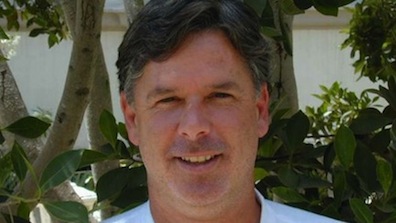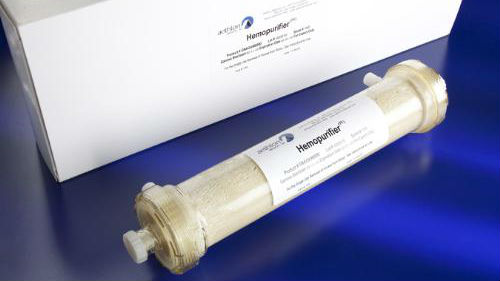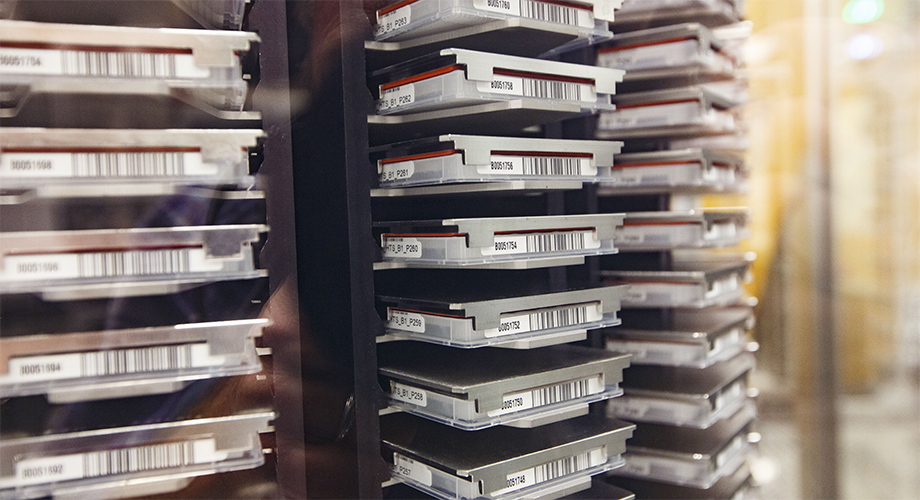Daily Business Report-Nov. 21, 2014
An artist’s rendering of the restaurant that would sit on the top of the four-story Rental Car Center at San Diego International Airport. (Courtesy of San Diego County Regional Airport Authority)
Trendy Restaurant Sought for Top of the
New Rental Car Center at Lindbergh Field
Restaurateurs searching for a great new venue may soon be beating down the doors of the San Diego County Regional Airport Authority. That’s because the operator of Lindbergh Field is looking for a restaurant to fill a space atop the four-story, $316 million Rental Car Center that is being built at the airport.

Whoever gets the lease for that prime 7,900-square-foot space will be able to entice airline passengers and a lot more people with intimate views of the airport runway and panoramic view of the city’s skyline, bay and marinas.
“We are looking for this to become ‘San Diego’s restaurant,’” says Michael Spilky, president of Location Matters Brokerage Services, the company that was hired by the Airport Authority to find a suitable restaurant for the Rental Car Center, which is scheduled to open in 2016.
“We’re seeking to establish a unique brand that will resonate with the entire San Diego community and what we are all about: casual, yet refined, craft beer and cocktail-centric, and an approachable and local artisanal food experience,” said Spilky.
The space itself will contain 180 feet of floor-to-ceiling frontage and have a flexible layout with an outdoor patio seating opportunity. According to Location Matters, branding and signage opportunities exist on both sides of the building structure visible from Interstate 5. An exclusive elevator entry will take patrons swiftly to the restaurant entry.

Laying it on a little thickly, Spilky says: “This is a generational opportunity to be the restaurant we all talk about for the next 30 years; a sustainable place to woo your out-of-town guests, have a date night, or even a power lunch.”
Location Matters is marketing the lease for the restaurant space on an exclusive basis. Leasing inquiries can be made to Spilky at (858) 764-4223.
San Diego County Jobless Rate Declines Again
Nonfarm jobs up by 12,500 over the month; up 34,600 over the year
San Diego County’s unemployment rate dropped from 5.9 percent in September to 5.8 percent in October, the state Employment Development Department reported today. October’s jobless rate was a big drop from the 7.4 percent rate that was registered in October last year.
The unadjusted unemployment rate for California in October was 7 percent, while the nation’s jobless rate was 5.5 percent for the same period.
Between September and October 2014:
Total nonfarm employment increased from 1,346,000 to 1,358,500, a gain of 12,500 jobs. Agricultural employment added 100 jobs, or 1.0 percent.
• Government posted the greatest month-over gain, adding 6,800 jobs. Local government (up 4,300) contributed to more than 60 percent of the job growth in this sector, primarily from local government education (up 4,100). State government added 2,500 jobs, almost all from state government education (up 2,400). Federal government recorded no change in employment levels over the month.
• Five other nonfarm sectors also added jobs over the month: educational and health services (up 3,500); professional and business services (up 2,000); trade, transportation, and utilities (up 1,700); financial activities (up 400); and manufacturing (up 300).
• Two sectors recorded month-over job losses. The most significant came from leisure and hospitality (down 1,900). Other services declined by 300 jobs.
Between October 2013 and October 2014:
Total nonfarm employment increased by 34,600 jobs, or 2.6 percent. Agricultural employment remained unchanged over the year.
• Professional and business services posted the greatest year-over gain, adding 9,000 jobs. Professional, scientific, and technical services (up 6,300) accounted for 70 percent of the job growth in this sector. Administrative and support and waste services added 1,900 jobs, mostly from employment services (up 1,700). Management of companies and enterprises gained 800 jobs.
• Eight other sectors also added jobs over the year. The most notable job growth came from educational and health services (up 6,100), primarily from health care and social assistance (up 5,500); trade, transportation, and utilities (up 5,400), mostly from wholesale trade (up 3,100); and construction (up 4,600).
• One industry recorded year-over job losses: financial activities (down 300).
Grant Gives New Breath to Patients
Suffering from Shortness of Breath
UC San Diego Health System has received a $7.6 million grant to help launch a nationwide patient registry to learn more about chronic thromboembolic pulmonary hypertension (CTEPH or shortness of breath), a health condition that affects several thousand Americans a year, but is commonly misdiagnosed.
Imagine trying to take a deep breath, but feeling like you’re sucking air through a straw. That’s how some patients describe living with the condition.
The United States CTEPH registry, funded by Bayer Healthcare Pharmaceuticals, is a centralized electronic database that will involve 30 sites across the nation. UC San Diego Health System will manage the registry with the goal of enrolling 750 newly diagnosed patients over the next six years. It will allow physicians to follow the short- and long-term outcomes of patients and learn more about CTEPH.
“Currently, the number of patients in the United States with CTEPH is unknown. Because the symptom of shortness of breath is nonspecific, many CTEPH patients may be misdiagnosed as having more common diseases like asthma or COPD,” said Kim Kerr, M.D., principal investigator and pulmonologist at UC San Diego Health System. “Using data collected from the registry, we will identify barriers to patients receiving the correct diagnosis and treatment of their CTEPH. This registry will also allow us to assess the effectiveness of established and evolving therapies of this disease.”
San Onofre Plant Settlement Puts
Ratepayers On Hook for $3.3 Billion
California regulators unanimously approved a settlement agreement on the San Onofre Nuclear Generating Station hammered out between several consumer groups, the Office of Ratepayer Advocates, Southern California Edison and San Diego Gas and Electric.
Under the agreement customers will pay about $3.3 billion of the cost of shutting down the plant. The plant’s owners will pay about $1.4 billion. Edison is the plant’s majority owner.
All five California Public Utilities Commission members approved the deal.
SDG&E’s senior vice president of finance, regulatory and legislative affairs Lee Schavrien praised the commission’s unanimous decision. “We believe the settlement achieves a fair balance for all parties involved, and reflects input from customers and consumer advocate groups, as well as the modifications proposed by the CPUC,” said Schavrien.
— KPBS
UC Regents Approve Tuition Increases
SAN FRANCISCO — The University of California has approved raising tuition by as much as 5 percent in each of the next five years unless the state devotes more money to the 10-campus system.
The Board of Regents voted on Thursday to adopt the tuition increases proposed by UC President Janet Napolitano and opposed by Gov. Jerry Brown and legislative leaders who decide how much funding the university gets each year.
The board approved the hikes as protesting students loudly chanted, “Hey hey, ho ho, tuition hikes have got to go!”
When the vote was completed, the crowd repeatedly chanted “Shame on you.” The board chairman eventually called for a recess and asked security to clear the room at UC San Francisco so the meeting could continue.
UC officials have said that the hike, which could make tuition more than $15,000 by 2019, is more than is necessary to help offset higher pension and salary costs, as well as to help recruit more in-state students.
They have also said that the tuition hike could be less than 5 percent depending on state funding of the university system.
Napolitano says the amount the governor has budged is inadequate to maintain the quality of the nation’s largest public university. Brown says UC needs to come up with a more frugal way of doing business.
Tuition rates have been frozen for three years.
— City News Service and AP

USD Chemistry Professor Honored
University of San Diego Chemistry Professor Mitchell Malachowski, who has become a national leader in promoting undergraduate research, was honored Thursday as the 2014 California Professor of the Year by the Carnegie Foundation for the Advancement of Teaching and the Council for Advancement and Support of Education. Malachowski was selected from nearly 400 top professors in the United States.
“This award speaks to the overall quality of the University of San Diego’s Chemistry and Biochemistry Department and the value our faculty place on undergraduate research,” Malachowski said. “Many people here have helped me develop my approach to teaching.”
Earlier this year, Malachowski also received the 2014 Council on Undergraduate Research Fellows Award at its national conference in Washington, D.C. Since 2006, he has received $1.5 million from the National Science Foundation to conduct more than 40 workshops across the country to help promote a culture of undergraduate research to promote and enhance student achievement.
Donors Give $131M for Construction
Of the Jacobs Medical Center
More than 1,000 donors have given a total of $131 million toward the construction of the Jacobs Medical Center, a 245-bed facility under construction at UC San Diego, school officials announced Thursday. More than half of the money, $75 million, was donated by Qualcomm co-founder Irwin Jacobs and his wife, Joan, four years ago, according to UCSD.
The 10-story, nearly 510,000-square-foot medical center is expected to carry a price tag of $839 million. It will include the A. Vassiliadis Family Hospital for Advanced Surgery, The Pauline and Stanley Foster Hospital for Cancer Care and the Hospital for Women and Infants.
“Jacobs Medical Center is part of a multibillion-dollar university investment in the future of health care for the region,” said David Brenner, vice chancellor for Health Sciences and dean of the UCSD School of Medicine. “I want to thank all of the donors who have helped make this extraordinary medical center a reality.”
School officials said the concept of the medical facility is to provide patients with easier access to all of the UCSD Health System’s treatment options. Physicians at the Jacobs Medical Center will also work in concert with the UCSD Moores Cancer Center, Sulpizio Cardiovascular Center and Shiley Eye Center.
— City News Service

La Mesa Condo Rental Homes Sold
The Central Park La Mesa condominium rental homes have been sold for $28.3 million. The buyer: VLD Sweetwater LP and Central Park Partners LP, partnerships controlled by San Diego-based R&V Management.
The homes, located at 5636 Amaya Drive in La Mesa, consists of 124-unit rental homes in the 216-unit Central Park La Mesa condominium community. Built in 1989 and partially renovated in 2006, the property features a low-density design with a park-like setting. Central Park La Mesa began condominium sales in late 2006 before ceasing in early 2008, during which time 92 homes were sold. The remaining 124 homes consist of one- and two-bedroom units averaging 865 square feet.
CBRE represented the seller.
Researchers Find How Mutant
Gene Can Cause Deafness
Scientists at The Scripps Research Institute (TSRI) have discovered how one gene is essential to hearing, uncovering a cause of deafness and suggesting new avenues for therapies.
The new study, published November 20 in the journal Neuron, shows how mutations in a gene called Tmie can cause deafness from birth. Underlining the critical nature of their findings, researchers were able to reintroduce the gene in mice and restore the process underpinning hearing.
“This raises hopes that we could, in principle, use gene-therapy approaches to restore function in hair cells and thus develop new treatment options for hearing loss,” said Professor Ulrich Müller, senior author of the new study, chair of the Department of Molecular and Cellular Neuroscience and director of the Dorris Neuroscience Center at TSRI.

Fisher House Under Construction at
Camp Pendleton For Military Families
Fisher House Foundation and United Health Foundation have broken ground on the Fisher House at Camp Pendleton that will serve as a home away from home for military families, including families of wounded warriors, who can stay at no cost while a loved one is receiving treatment at nearby Naval Hospital Camp Pendleton.
The house will be the first at Camp Pendleton and will be located adjacent to the new Naval Hospital with a view overlooking the Pacific Ocean.
The construction of the Camp Pendleton Fisher House is the first to be funded through the support of a single donor — United Health Foundation, which provided a $2.65 million grant. The home will be an eight-suite, 8,000+ square-foot home that is expected to serve more than 280 families and provide nearly 3,000 nights of lodging annually, and save those families more than $250,000 a year in lodging expenses.
The United Health Foundation Caregiver Support Program will make child care available to military families staying at the Camp Pendleton Fisher House through a special grant to the Zach and Elizabeth Fisher Child Development Center located on Camp Pendleton.
BioMed Realty Trust and Broad
Institute Form Strategic Partnership
BioMed Realty Trust Inc. and the Broad Institute of MIT and Harvard have established a strategic partnership to foster innovation and promote relationships between academia and the life science industry. BioMed Realty’s investment group, BioMed Ventures will work with the Broad Institute to engage the biomedical community through events designed to bring together thought leaders from academia, biotech, and pharmaceutical companies and the investment community to stimulate conversations across their networks.

San Diego Company’s ‘Undress’
Gains Traction on Kickstarter
A San Diego inventor’s “Undress,” a garment that allows women to effortlessly change workout clothes, has raised more than $600,000 on Kickstarter and a spot on national TV. The product won the Fashion Face-Off challenge during “Good Morning America’s” “Shark Tank Your Life” last Friday.

Inventor Dennis Caco developed a unique fashion system that has the appearance of an ordinary dress, but is designed with special features that allow women to change clothes, even out of a sports bra, anywhere at anytime.
“Working in active sports myself, I’ve seen that one of the hardest things for women about working out isn’t the workout itself. It’s changing out of their sweaty clothes afterward,” Caco said.
“Even as a guy, I see and feel the discomfort that women have to go through when they try to sneak in their cars to change or try to inconspicuously change under a towel,” he added.
April Estrada, co-founder of The Undress Inc., the company created to market the product, is a runner who was frustrated by “how difficult and uncomfortable it was to change out of my clothes, especially my sports bra, immediately after a run.”
The Undress is designed with two “side access” openings, a “slip under” front panel, drawstring, front inner lining, and other special features that make the transition of changing without being exposed possible.
— Times of San Diego

Report: City Needs to Find Ways
To Fund Affordable Housing Projects
The City Council’s Smart Growth and Land Use Committee on Thursday requested staff to find ways to increase revenues that would pay for future affordable housing projects in San Diego.
Part of a deal brokered between the business community and the San Diego Housing Commission, which runs affordable housing programs for the city, was for officials to look for other funding streams. The two sides had been at odds over hiking a fee on commercial development to pay for such projects.
Officials in San Diego and other cities in California have been looking for ways to pay for affordable housing since the state abolished redevelopment. According to the Housing Commission, around 47,000 names are on an affordable housing waiting list in San Diego.
The committee’s request to the city’s Independent Budget Analyst came during a truncated discussion over a recently released IBA report on how to pay for San Diego’s $2 billion of infrastructure needs.
The IBA’s suggestions for revenue increases focused more on infrastructure and not so much on affordable housing, so it was redirected to the Infrastructure Committee, which has a special meeting set for Dec. 11.
The report says the city needs to consider raising taxes, instituting new levies, changing the type of bond that is taken out and dumping an ordinance that requires free curbside garbage collection.
IBA Andrea Tevlin said her office could begin working on a revenue study tailored more to affordable housing early next year.
— City News Service
Local Firm’s Ebola Treatment Ranked
A Top Invention of 2014 by Time Magazine
Time Magazine on Thursday named a San Diego company’s blood-filtration system, which has been used to treat a patient with Ebola, as one of the 25 best inventions of 2014.

Aethlon Medical Inc.’s Hemopurifier was included in the magazine’s annual round-up of the “best inventions making the world better, smarter and — in some cases — a little more fun.”
The device is designed to rapidly eliminate viruses and dangerous proteins from the blood system of infected individuals. It has been used in the treatment of Ebola, HIV and Hepatitis C.
Doctors in Germany used the Hemopurifier to treat a Ugandan physician who was unconscious and suffering from multiple organ failure due to Ebola. The patient’s viral load prior to a 6.5-hour treatment was measured 400,000 virus copies per milliliter of blood and afterward was measured at 1,000 copies per millimeter. The patient recovered. — Times of San Diego



